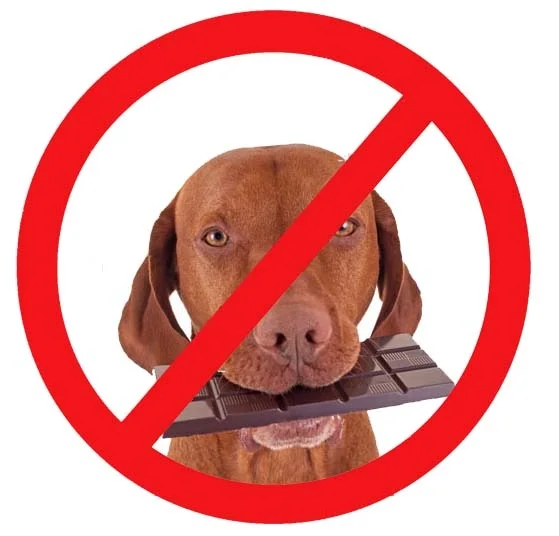Introduction
Introduction
When it comes to chocolate, many people are aware that it can be harmful to dogs, but understanding why is crucial for keeping our furry friends safe.
Understanding the dangers of chocolate consumption for dogs
Chocolate consumption can be extremely dangerous for dogs, as it contains substances like theobromine and caffeine that are toxic to them. These chemicals can lead to various symptoms of poisoning, including vomiting, diarrhea, increased heart rate, seizures, and even death. It is crucial for dog owners to understand the risks and take immediate action if their dog accidentally consumes chocolate.
Composition of Chocolate
Chocolate is composed of various ingredients, including cocoa solids, cocoa butter, sugar, and sometimes milk. These ingredients are what give chocolate its flavor and texture, but they also contain substances that can be harmful to dogs.
Theobromine in chocolate and its toxic effects
Theobromine, a compound found in chocolate, is highly toxic to dogs. It can cause various symptoms, including restlessness, increased heart rate, tremors, and even seizures. Immediate veterinary care is needed if a dog consumes chocolate to minimize the risk of serious health complications.
Caffeine in chocolate and its impact on dogs
Caffeine, another compound found in chocolate, can also be harmful to dogs. It can cause similar symptoms to theobromine toxicity, including restlessness, increased heart rate, and tremors.
Symptoms of Chocolate Poisoning in Dogs
When a dog ingests chocolate, it can experience symptoms of chocolate poisoning, such as vomiting, diarrhea, increased thirst, panting, restlessness, elevated heart rate, muscle tremors, and seizures. If your dog shows any of these symptoms after consuming chocolate, it is important to seek veterinary care immediately.
Identifying signs of chocolate toxicity in dogs
Some signs of chocolate toxicity in dogs include vomiting, diarrhea, increased thirst, panting, restlessness, elevated heart rate, muscle tremors, and seizures. It is crucial to be able to identify these symptoms to take prompt action in case of chocolate ingestion.
Immediate actions to take if a dog consumes chocolate
If a dog consumes chocolate, it is crucial to take immediate action by inducing vomiting if the ingestion occurred within the last two hours and seeking veterinary care for further treatment and guidance.
Factors Affecting Toxicity Levels
Type of chocolate and its theobromine content
Different types of chocolate have varying levels of theobromine, with darker chocolates containing higher amounts, making them more toxic to dogs.
Dog’s size, breed, and overall health affecting susceptibility
The size, breed, and overall health of a dog can influence their susceptibility to chocolate toxicity, with smaller dogs and dogs with pre-existing health conditions being more at risk.
Type of chocolate and its theobromine content
Different types of chocolate have varying levels of theobromine, with darker chocolates containing higher amounts, making them more toxic to dogs.
Dog’s size, breed, and overall health affecting susceptibility
The size, breed, and overall health of a dog can affect its susceptibility to chocolate toxicity. Smaller dogs are more at risk, as are certain breeds and dogs with underlying health issues.
Treatment for Chocolate Poisoning
Inducing vomiting and seeking veterinary care
<
p>
If a dog consumes chocolate, it is crucial to induce vomiting immediately and seek veterinary care to prevent further absorption of theobromine and caffeine.
Inducing vomiting and seeking veterinary care
To induce vomiting and seek veterinary care immediately after a dog consumes chocolate is crucial for preventing further absorption of theobromine and caffeine. Taking these immediate actions can help mitigate the potential harm caused by chocolate poisoning.
Treatment options and supportive care for chocolate toxicity in dogs
Some possible treatment options for chocolate toxicity in dogs include inducing vomiting, administering activated charcoal to absorb the toxins, providing supportive care such as IV fluids and medications to manage symptoms, and closely monitoring the dog’s vital signs and organ function. It is essential to seek veterinary care immediately for professional guidance and appropriate treatment.
Prevention and Conclusion
Tips for preventing chocolate ingestion by dogs include keeping chocolate products securely stored and out of reach, educating family members about the dangers, avoiding leaving chocolate unattended, and seeking alternatives such as dog-friendly treats. Remember, the key to preventing chocolate toxicity is vigilance and responsible pet ownership.
Tips for preventing chocolate ingestion by dogs
- Keep chocolate products securely stored and out of reach of dogs.
- Educate family members about the dangers of chocolate for dogs.
- Avoid leaving chocolate unattended, especially in areas accessible to pets.
- Seek alternatives such as dog-friendly treats to satisfy your pet’s cravings without the risk.
- Stay vigilant and practice responsible pet ownership to prevent chocolate ingestion by dogs.
Understanding the importance of keeping chocolate away from pets.
Understanding the importance of keeping chocolate away from pets:
Ensure the safety and well-being of your furry companions by being aware of the potential risks of chocolate ingestion and taking necessary precautions to prevent any accidental consumption.
